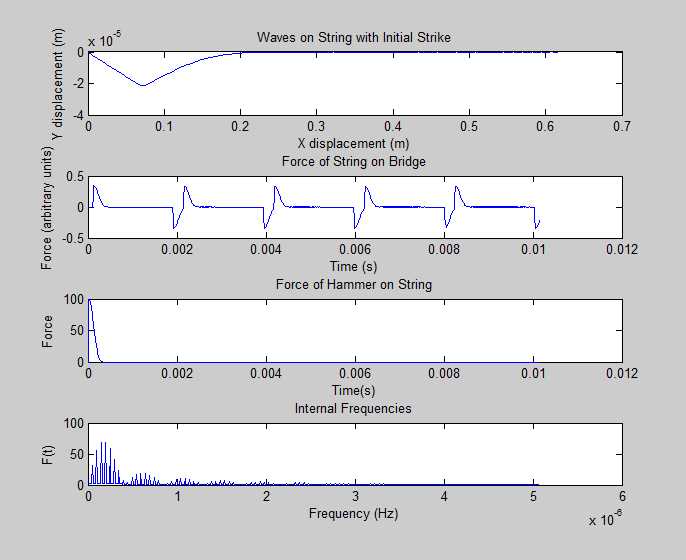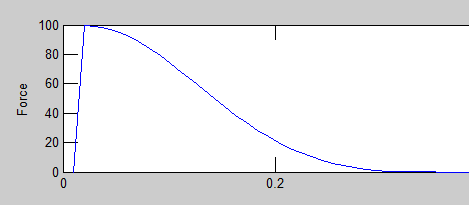The piano string is a much more difficult scenario to model than the plucked guitar string. The guitar string is a pluck, which can be easily modeled with an initial string position. The piano string has a felt covered hammer that strikes the string, then a standing wave will form. Seen in the data below, we were able to construct an initial hammer strike on the string, and analyze how it moved throughout:
Our force on the bridge diagram yielded a decent fourier transform but we came across one problem, our hammer string was not executed properly. In the class text, the force of the hammer on the string, with the spring force behavior from the felt, should yield a soft hit that should appear as a parabolic force vs. time diagram. Our data shows that it increases linearly and then proceeds to decrease at an acceptable rate. This is something that we must look further into.
Hammer Force seen in class textbook: (Computational Physics, Giordano, p.366)
(image to be added)
Hammer Force we calculated:
This needs to be re-evaluated in order to compare when testing and recording with a physical string.
Link to code: https://docs.google.com/document/d/1tNIwInru6_DcevXB49tW-0ULWkmS8BH2hKv6Tyn9kY4/edit?usp=sharing




Are you taking damping into account? Just wondering…